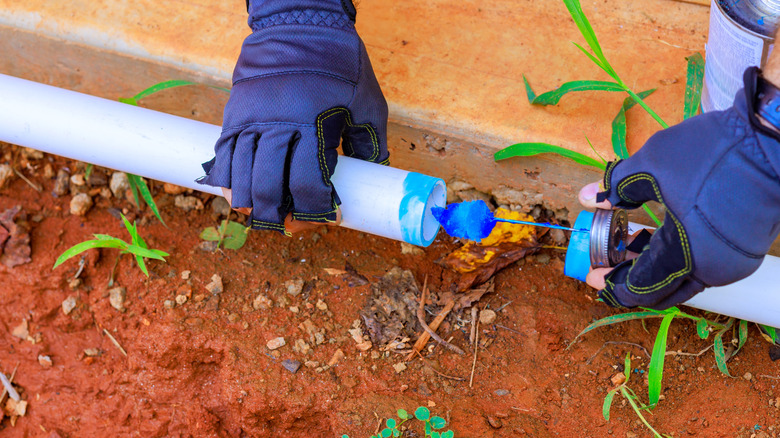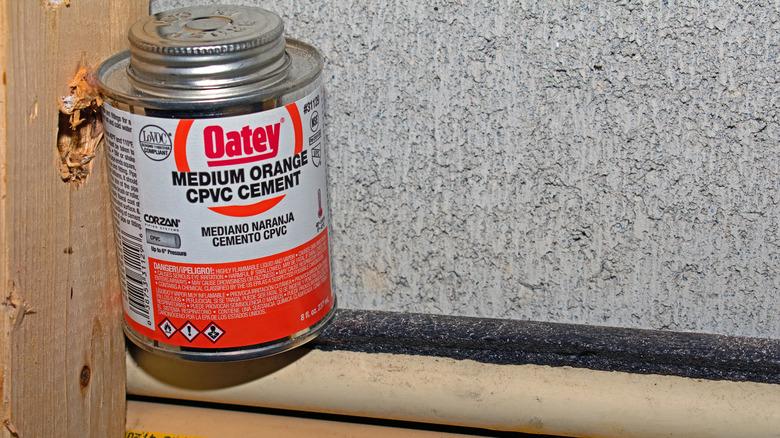The Best Products To Use When Gluing PVC Pipe For Long-Term Durability
We may receive a commission on purchases made from links.
Whether you're working on a garden irrigation system or installing a kitchen sink drain, gluing together PVC pipes isn't as easy as slapping on some super glue and calling it a day. The right products make the difference between a temporary fix and a permanent solution. PVC glue is actually a specialized cement that chemically welds pipes together by melting the plastic surfaces. This kind of welding process creates a bond stronger than the original pipe material and ensures leak-proof joints.
However, not all PVC cements are created equal. For the common white PVC pipes used for drainage, schedule 40, a medium-bodied cement works well, like Oatey's Blue Lava Medium-bodied Cement. These cements offer a good bonding strength and are easy enough to work with. Thicker pipes, like the gray schedule 80, require a heavy-bond cement which will fill larger gaps between two fittings.
Environmental factors also matter when working with PVC. If you're outdoors in the cold, you'll want a fast-setting cement like Weld-On's Wet 'N Fast PVC Cement. For rainy areas, keep an eye out for water-resistant formulas. The most important thing is to always match your cement with the specific thickness of your pipe. Regular-bodied for pipes and fittings up to 4 inches in diameter, medium for up to 6 inches, and heavy for up to 12 inches. Making the correct choice now will save you from a possible costly repair later.
Specialty projects require specialty PVC pipe glues
There are some big mistakes that you could make when gluing PVC pipes, and while most standard cement works fine for household projects, some special jobs need specific solutions. For CPVC pipes, the cream-colored ones used for hot water lines, you'll need a specialized cement that is created specifically to withstand higher temperatures. If you're working on a pressurized pipe, you'll want to look for a high-strength cement with a heavier pressure rating. Smaller clear PVC tubing for aquariums benefit from using clear cements so there's no obvious residue left over. Primer is also something you should consider when working with PVC. Primers help ensure perfect bonds by softening the surface of the pipes. You can find these on their own or go with a combo pack like Oatly's purple Primer and Regular Cement.
Applying the PVC cement matters just as much as choosing the correct product. Make sure to cut pipes even with a tubing cutter to fit them perfectly. Apply the cement to both the pipe and the fitting socket, then twist it in as you insert it so the cement spreads as evenly as possible. Hold it together in your hands for at least 30 seconds, the pressure will help lock the pipe into the fitting and make it so there's no chance of it pushing out as the cement sets. After you're finished, be sure to store your leftover PVC glue correctly to avoid it drying out.

